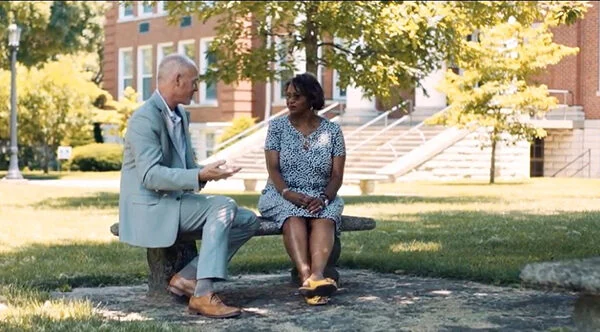[vc_row][vc_column][vc_column_text]Federal law allows Medicaid applicants numerous ways to protect assets. However, few people know about these optons, and advice abounds to simply “spend down all” of the applicants assets in order to qualify for Medicaid Long-Term Care assistance. Following the wrong advice can cost you thousands, if not hundreds of thousands of dollars, that you could otherwise be used for other needs that are sure to arise or to pass on to your loved ones.
Paying for Long Term Care whether in a community living arrangement, whether a skilled nursing facility, nursing home or an assisted living facility, has become very complicated, and the complexity grows every year. The rules for government benefits vary significantly if the individual seeking benefits is married, single, or if both spouses need benefits. It is always best to seek the guidance of an Elder Law Attorney before you apply or arrange assets.
Here are the 5 biggest planning mistakes to avoid.
1. Selling the Home.
Your home is your life’s memories and often your greatest investment. If a couple is planning for the care of only one spouse, the home is exempt from being counted as an asset. However, if both persons needs benefits, or if the applicant is single, the residential home is a countable resource. This means that it will prevent you from receiving benefits.
However, several exemption transfers are available options that will allow the home to not be counted as a resource or counted as a penalty.
Solution: A person should never begin the process of spenddown without knowing all of the rules for exemptions and penalties.
2. Gifting to the Children.
When we pass away we want to be able to give to our children as much as we can. Once the financial burdens of long-term care enter the picture this seems like a lost possibility. When we hear about Medicaid Spenddown, we may think one easy way to get below the asset cap of $2,000.00 is to give money to the children. The result will be a penalty. The transfer of non-exempt assets must be for qualifying expenses for fair market value.
If money is given away, it is not in exchange for a Fair Market Value service or good, and therefore, it results in a penalty to the applicant (if it occurs within 60 months of application in most states).
Solution: Many options for allowable expenses exist. Funeral planning, getting a solid Power-of-Attorney in place, or making a will are top priorities that need to be considered in any spenddown strategy. Options for setting aside for your children do exist, but these options can be complicated. Any person needing to apply for government benefits should resist the urge to quickly spend all asset without seeking professional advice first.
3. Using Assets To Pay Monthly Expenses.
Even giving money away, although it will incur a penalty, will provide options for better planning than just spending on monthly needs. Many other options exist for using of the assets you have worked all of your life to accumulate.
A simple example: Your car is exempt from being counted as an asset. If you traded your existing car in and spent an additional $20,000.00 to purchase a new car. This $20,000.00 in assets is now excluded.
Now, that is not the end of the story. Medicaid does practice Estate Recovery in the Commonwealth of Kentucky. However, if the value of the Estate is less than $10,000.00 at the time of Probate, then there will be no re-payment required by Medicaid. The car would then be passed on to the heirs of the Estate. While it isn’t complete savings of your $20,000.00 for your heirs, it is more than they would otherwise receive. And, this is only one possible option.
Solution: Many exemptions exist under the Federal and state rules for Medicaid. A couple or individual should never start spending down assets without talking with a skilled Elder Law Attorney who can guide you through the complexities of spenddown options in order to maximize the benefit of your assets.
4. Failing to Include Legal Planning in the Spenddown Strategy.
The urgency of the medical crisis demands one’s attention when a loved one is in a Skilled Nursing Facility and money is running out. However, a major concern for the future is having legal authority to make decisions for the one receiving care. Someone will have to do banking, speak to Doctors, get medical records released, care for the Estate through Probate. Each of these actions require specific legal documents. At a minimum, every person needs to make provision for our loved ones having the following forms on our behalf: HIPAA release, a Will, a Durable Power of Attorney, and a Living Will/Advanced Directive. One warning which should make the list as a mistake all by itself: beware of purchasing such document online over the Internet, or from a general practice attorney. More often than not, clients we see have to have these redone because they do not meet the needs of elderly people under longterm care situations.
Solution: Include Estate Planning documents in your spenddown process that are customized by a professional who is well acquainted with the specific drafting concerns for persons in your situation. This will give you great peace of mind that regardless of what may happen in the future, you have the protection you need.
5. Purchasing Exempt Assets Before Date of Admission.
One major protection for the spouse is the “community spouse resource allowance,” or CSRA for short.
To understand the CSRA, you need to know that the state considers some assets “exempt” from being spent down to qualify for Medicaid. For example, a couple’s residence, one motor vehicle, household goods and furnishings, medical equipment, jewelry, and a number of other items are exempt.
Other assets, such as the couple’s checking and savings accounts, certificates of deposit, mutual funds, savings bonds, and so on, are typically considered “non-exempt,” meaning they are subject to spend-down.
Of these non-exempt items, a Medicaid applicant’s spouse may keep one-half as a CSRA, up to a maximum in 2017 of $120,900. For example, a couple whose non-exempt assets total $180,000 would be approved for a CSRA of $90,000. That means the spouse at home could keep that amount and not need to spend it down for the spouse in the nursing home to qualify for Medicaid.
Now, an important thing to realize about the CSRA is that it is calculated on the value of non-exempt assets owned by the couple on the date of admission to a nursing or other medical facility.
People sometimes go wrong by purchasing exempt assets before the date of admission in anticipation of applying for Medicaid. “Let’s hurry up and spend down some assets as soon as possible,” the thinking goes. An example shows how this thinking inadvertently backfires:
A couple with $180,000 in non-exempt assets buys two irrevocable burial reserves (which are exempt assets) for a total of $30,000 two days before the husband enters a skilled nursing facility. This purchase reduces their non-exempt assets to $150,000. The wife will now be approved for a CSRA of $75,000 (one-half of the non-exempt assets on date of admission), and $75,000 is potentially subject to spend-down.
Had the couple waited a few more days to make the purchase, the wife would have been approved for a CSRA of $90,000. Purchase of the burial reserves could have come from the couple’s remaining resources. Jumping the gun cost the couple $15,000 in guaranteed asset protection.
Solution: To avoid this mistake, defer buying any needed exempt assets until after date of admission to a qualifying facility.
6. Failing to Use Non-exempt Assets to Protect the Spouse’s Income.
Federal law provides another important protection for the community spouse: the “monthly maintenance needs allowance” or MMNA for short.
The MMNA is an amount of income allowed to the spouse, ranging in amount from $2,002.50 to $3,022.50 a month. A formula incorporating “shelter costs” such as utilities, rent or mortgage costs, real estate taxes and insurance premiums determines where the spouse falls between the minimum and the maximum.
Many spouses have income below their allowed MMMNA. It quite often makes sense, if at all possible, to use the couple’s non-exempt assets to raise the community spouse’s income. Here’s an example:
Mr. Spencer, who was the family breadwinner, recently entered a nursing facility. His wife Carly, who stayed home to raise the children, receives $584 per month from Social Security as her only income. She is approved for a MMMNA of $2,100 a month. Her husband has income totaling $1,833 a month. The couple has $180,000 in non-exempt assets.
If they apply for Medicaid on their own, they may be denied benefits until they spend down $61,800. The gap between Mrs. Spencer’s MMMNA and her income will then have to come from Mr. Spencer’s income. If her husband dies, Mrs. Spencer may experience a drastic reduction in the income she receives for the remainder of her life.
However, with the right legal help, they may be able to purchase an annuity within Kentucky’s guidelines that would provide additional ongoing income to Mrs. Spencer, and allow Mr. Spencer to qualify sooner for Medicaid benefits. Rather than spend the money down, the couple could use their assets to ensure that Mrs. Spencer has more long-term income.
Due to changes in Medicaid law in recent years, the process for using non-exempt assets to provide income for the spouse has become so complex that virtually every married applicant needs the advice of an elder law attorney to know whether to pursue this approach, and how to do it.
Solution: Couples should usually make it a major goal to obtain and maintain income for the spouse, who may live for 10 or 20 years or longer. Prior to spending down assets, consult an elder law attorney experienced in Kentucky’s Medicaid law to find out how to use assets that might otherwise be spent down to provide income for the spouse.
7. Spending Down Exempt Resources.
Did you know that a community spouse’s individual retirement account (IRA) is exempt from Medicaid spend-down, even if it contains hundreds of thousands of dollars? Spending down funds from a resource like that unnecessarily wastes the couple’s assets and endangers the spouse’s economic well-being in the future.
Solution: A couple should never start spending down assets without knowing for certain which ones are exempt.
8. Missing Opportunities for Exempt Transfers.
Federal and state law provide ineligibility penalties when Medicaid applicants (or their spouses) make gifts of money or property during the five-year “look-back” period.
But many people don’t realize that the law also provides exemptions from those gifting penalties. For example, there is no penalty for gifting money to a disabled son or daughter of a Medicaid applicant. A residence (or a partial interest in one) can be given to a son or daughter who has lived in the home for at least two years prior to the owner entering a nursing facility, if that child has provided care that has kept the owner from being institutionalized sooner. These are just two examples.
Failing to take advantage of exempt transfers available to Medicaid applicants could financially burden a family member needlessly.
Solution: Get expert advice about transfer penalty exemptions that may apply in your circumstances before you spend down assets to qualify for Medicaid.
Planning for your medical concerns would involve seeking the best doctor for your care. The legal questions should be addressed by a skills specialist as well. We would be happy to speak with you about your situation to determine if our services would benefit you. Contact us for a consult, or for a detailed analysis of your situation.
This post provides general information for Kentucky residents and is not intended as a substitute for legal advice. The options presented in this article must be considered in light of the entire situation. Practices also may vary in other states, and rule changes and yearly standards occur regularly. For legal advice in a particular situation, you should consult with a qualified Elder Law attorney.[/vc_column_text][/vc_column][/vc_row]


